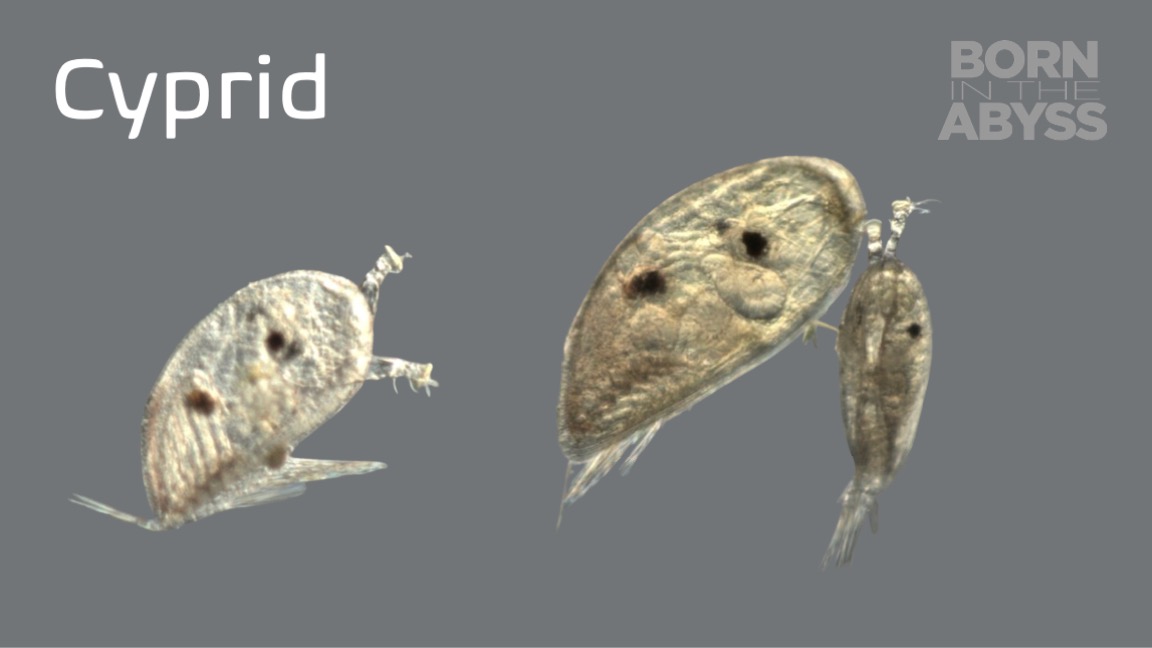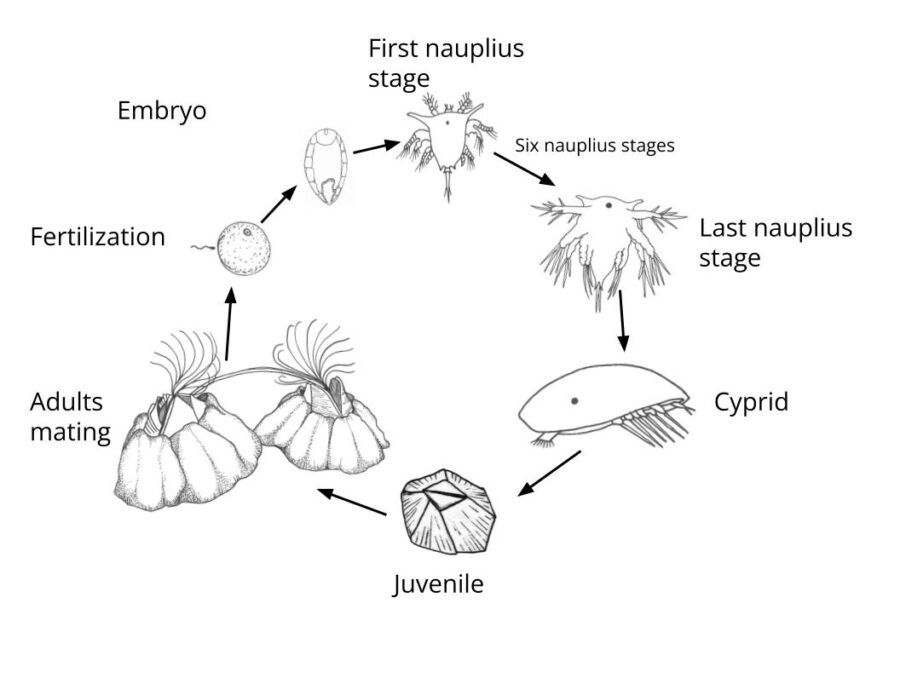
Cyprid
Plural: Cyprids
From the Greek word "Cypris," which is another name for the goddess Aphrodite
Parents: Barnacles
Food: Microscopic algae called phytoplankton
Size: About 800 microns tall = 0.8 millimeters = 0.03 inches

Image of adult gooseneck barnacles by McKenna Hainey
Larval Form and Function
Watch this compilation video to learn more about the movement, anatomy, and feeding of the cyprid larva.
Life Cycle of a Barnacle

Drawn by Nadia Stoker
- The cyprid larval stage only occurs in barnacles.
- Adult barnacles are all hermaphrodites, able to produce both eggs and sperm.
- Barnacles have internal fertilization, and the resulting eggs are brooded inside the adult. Eggs typically hatch into a feeding nauplius larva before developing into a cyprid larva.
- Barnacles spend days to weeks as cyprids, which do not feed and last just long enough to find a hard surface to attach to before transitioning into juvenile barnacles. Adult barnacles live for an average of 10 years and eat phytoplankton (algae) and zooplankton (animals).
- Since adult barnacles cannot move, but still need to undergo internal fertilization, they have developed the largest penis to body size ratio in the animal kingdom.
Larval Quest Activity
Developed by Nadia Stoker and Caitlin Plowman as outreach and education materials accompanying the Born in the Abyss film.
The Stephen Low Company
Oregon Institute of Marine Biology, University of Oregon
National Science Foundation

